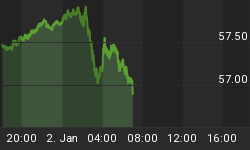The September Non-Farm Payroll Report came in with a net increase of just 142k jobs. The unemployment rate held steady at 5.1% and the labor force participation rate dropped to the October 1977 low of 62.4%. Average hourly earnings fell 0.04% and the workweek slipped to 34.5 hours. There were significant downward revisions of 22k and 37k jobs for the July and August reports respectively.
Just as important as today's NFP report, but mostly overlooked, was the Challenger's Job-Cut Report released on Thursday. It showed the September layoff count jumped from 41,186 in August to 58,877. The total number of layoffs year-to-date is 493,431, which is already higher than all of last year and is on a trajectory to be the greatest number of layoffs since 2009.
The tenuous state of our economy has led to an unskilled and unproductive labor force. According to the Bureau of Labor Statistics (BLS) an employed person constitutes anyone who worked for pay during the survey week. Therefore, if you provided one Uber ride around the block the BLS considers you employed with the same economic relevance as a full-time brain surgeon. In fact, our part-time low-paying job market is the reason productivity growth has averaged a meager 0.45% annually during the past four years.
So Where Does This Lead the Fed?
The real issue is despite Yellen's recent nod to a slowing global economy, the FOMC still remains obsessed with the relatively low unemployment rate. This is because of the wrong-minded belief that too many workers will suddenly hyper-inflate our deflating worldwide economy.
While Yellen and Company busily tinker with their Phillips Curve models--in a fatuous attempt to determine how many Americans they should allow to find work--they are missing the crumbling economic fundamentals all around them. The flattening yield curve, plummeting commodity prices, and weakening U.S. and international economic data; all illustrate that the asset bubbles created by central banks have started to pop.
Despite today's disappointing jobs report, the Federal Reserve continues threatening to commence a rate hiking cycle in the misguided fear of inflation emanating from a meaningless U-3 unemployment rate. What Keynesian central bankers fail to understand is Inflation only becomes manifest when the market loses faith in a fiat currency's purchasing power, not from more people becoming productive. Nevertheless, the Fed's models stipulate that a low unemployment rate breeds intractable inflation and the liftoff from ZIRP is set for the end of 2015. That is unless the U-3 unemployment rate turns around and starts heading north.
However, this go around the Fed will be raising rates into a yield curve that is already flat in historic terms and becoming narrower, and credit spreads that are already blowing out. Ms. Yellen will be hiking rates into falling long-term Treasury yields, falling Core PCE inflation data, slowing global GDP growth, and tumbling equity and junk bond prices. The only good news here is the Fed is moving towards a free-market interbank lending rate; and in the long term this is great for markets and the economy. But in the short term it will resume the cathartic deflation of asset prices and debt that was short circuited back in 2008.
Over 100 of the S&P 1500 stocks have fallen more than 50% and 600 are down more than 25% from the high. The S&P 500 dropped nearly 8% in Q3 and is down two consecutive quarters. The Dow Jones Industrial finished down three quarters in a row. Meanwhile, the manufacturing numbers in the US are in freefall and the Atlanta Fed forecasts growth of just 1.8% during Q3. And the IMF is set to lower its overall forecast of global growth again next week from its already anemic 3.3%.
On top of the slowing global growth and hawkish-sounding Fed, we find stock market valuations that are still the second highest in its history. For these reasons I believe the S&P 500 is going to trade down to the low 1,600 area in the next few months before possibly stabilizing. But exactly how low we end up going at least partially depends on how long the Fed blusters about normalizing interest rates. However, with the gravitational forces of deflation getting stronger, the FOMC will not be able to get far off the zero-bound range.
Hence, the next big prediction of mine is that the Fed will soon change to an easing monetary policy stance and cause weak-dollar investments to rebound, as the USD falls back towards 80 on the DXY. Pento Portfolio Strategies has held 40-50% cash since the end of 2014 in anticipation of this current bear market and recommends holding only those investments that will profit from a turn in Fed policy away from a hawkish position. While more ZIRP and QE may not rescue the overall market or economy, it should at least supply a bid for the beleaguered precious metals sector.















